Human introductions of pigs, goats, burros, black rats, Norway rats, house mice and house cats to the Galápagos Islands left the unique biodiversity of this World Heritage site in shambles.
But increasingly effective methods of eradicating these aliens are producing stunning results that have provided instruction for similar recoveries around the globe, that should inspire all advocates of native ecosystems, and that promise to eventually return the Galápagos Islands to a reasonable facsimile of what Darwin encountered.
The most recent victory was the January 2019 apparent eradication of black and Norway rats from 456-acre North Seymour Island and nearby 12-acre Mosquera Islet.
Coordinating the project was Island Conservation, a non-profit outfit dedicated to preventing extinctions around the world. It used drones to apply bait laced with the anticoagulant rodenticide brodifacoum at 25 parts per million.
The six-rotor drones weighed 55 pounds. Two were deployed, each carrying 44 pounds of bait specifically designed by Bell Labs of Madison, Wisconsin for the island’s climate and to repulse non-target wildlife.
The drones were piloted and maintained by Cameron Baker and Samuel Vye—founders of New Zealand’s Environment and Conservation Technologies LTD.
This drone delivery of rodenticide was a first in island recovery and a global game changer. “You can take a drone, pack it up, put it on a plane and go anywhere in the world with it,” declares Island Conservation’s Chad Hanson, who led the operation. “That’s effectively opening a door to a whole new suite of islands that haven’t been feasible for recovery in the past.”
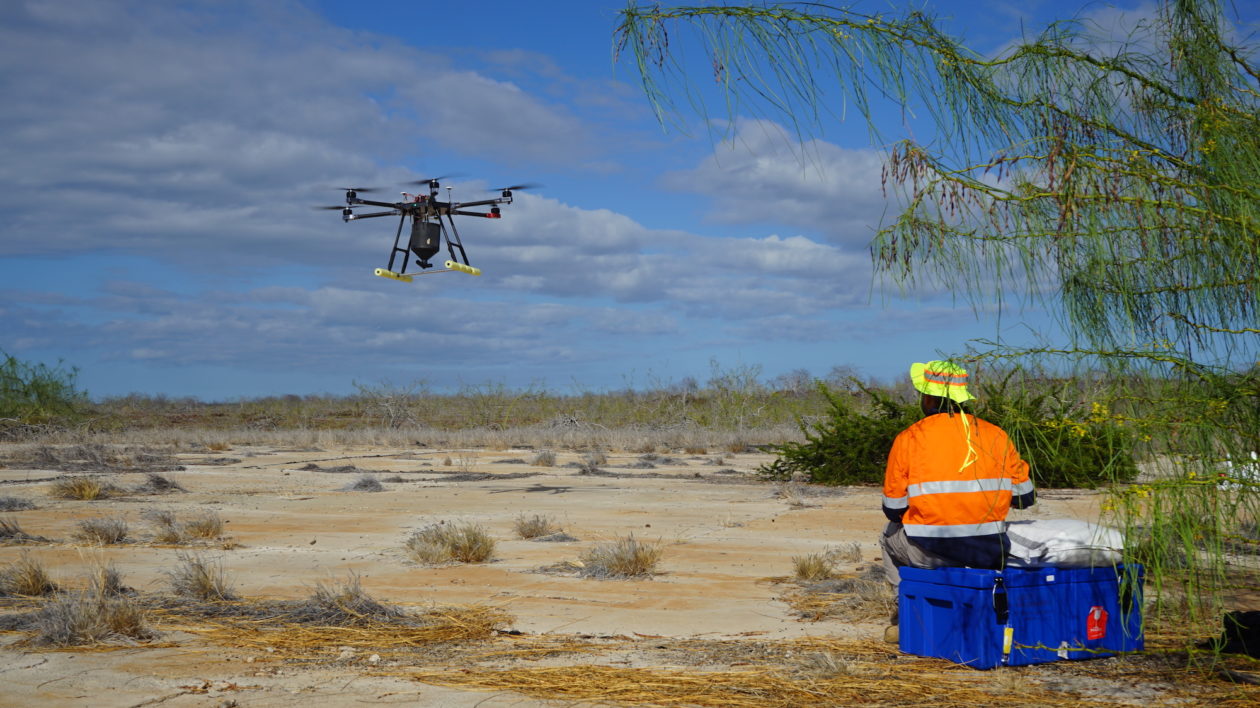
Virtually inevitable on North Seymour and Mosquera are population explosions of magnificent and great frigate birds, blue-footed boobies, Nazca bobbies, swallow-tailed gulls (the world’s only nocturnal gull), critically endangered lava gulls, and Galápagos racer snakes. The marine environment will also benefit because coral depends on nitrogen from bird guano.
A 2007 attempt at rat eradication on these two islands succeeded; but rats apparently swam from Baltra Island and repopulated. Now a phalanx of bait stations will likely preclude recolonization.
Other rat eradications on Pinzon, Rabida and many small islands have proved spectacularly successful. In 2012 the population of black rats on 4,500-acre Pinzon Island was estimated at 18 million. All Pinzon giant tortoises were at least 150 years old. No hatchling had ever survived the rats.
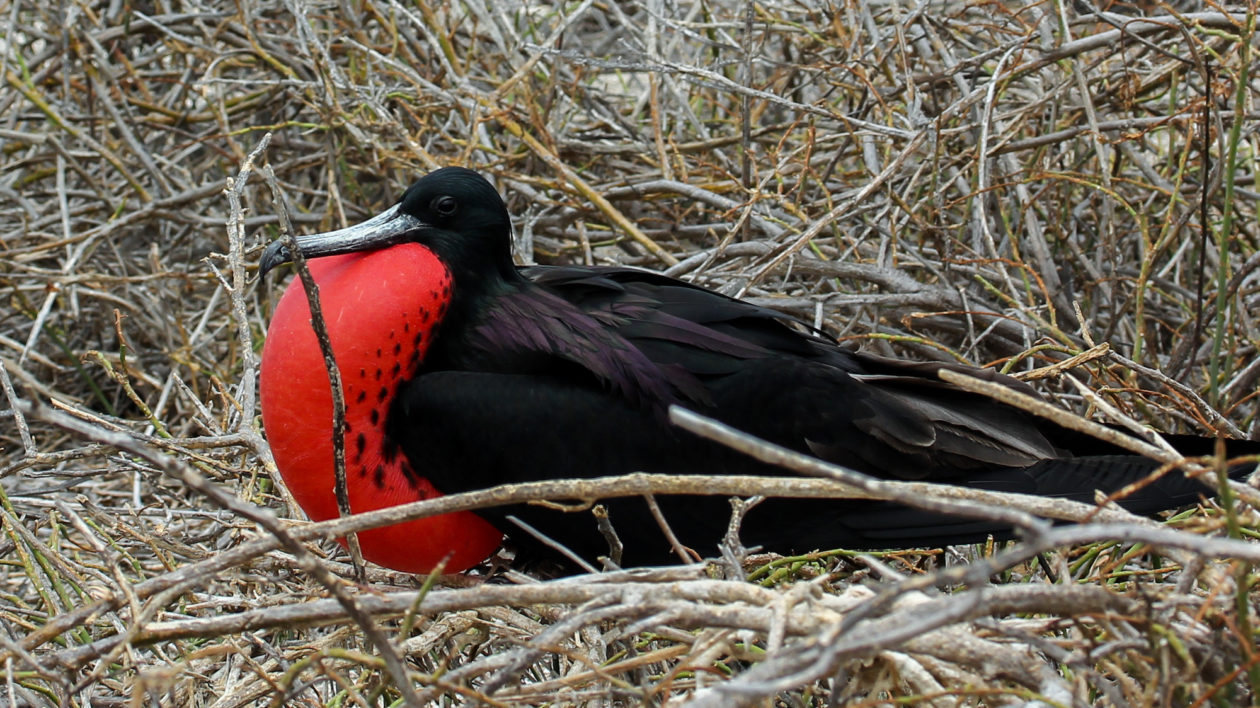
But in December of that year the partners took out all the rats with brodifacoum, then released 118 juvenile tortoises from the breeding center on Santa Cruz Island.
Within months tortoise hatchlings appeared for the first time in a century and a half.
Also profiting from a rat-free Pinzon Island are Galápagos hawks, Pinzon lava lizards, Pinzon leaf-toed geckos, marine iguanas, six endemic land snails, six endemic insects and the cactus Opuntia galapageia.
Before alien eradications the archipelago’s giant tortoise population had crashed from maybe 300,000 to around 30,000, and extinction seemed inevitable. Now extinction seems unlikely.
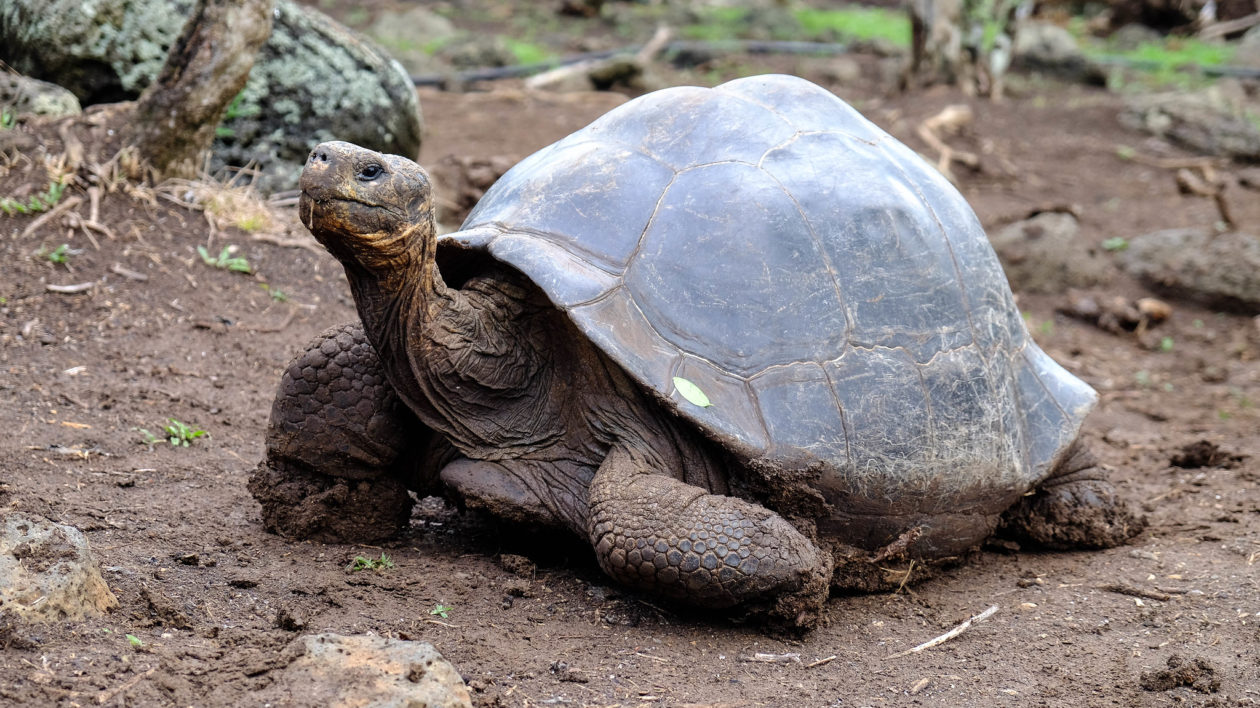
Fate of the Iguana
Land iguanas abound on North Seymour where they were introduced in 1932 and 1933 by two scientists who noticed that feral cats were devastating the native population on Baltra Island. The translocation was fortunate because, with arrival of World War II military traffic and additional alien species, Baltra iguanas flickered out.
In Voyage of the Beagle Darwin reported his 1835 observation about land iguanas on 144,470-acre Santiago Island: “I cannot give a more forcible proof of their numbers, than by stating that…we could not for some time find a spot free from their burrows on which to pitch our single tent.”
Three years later Abel du Petit-Thouars became the last person who would ever see a live native Santiago land iguana. Gross infestations of pigs, goats, burros, black rats and house mice left by humans (mostly whalers and pirates) quickly extirpated the species.
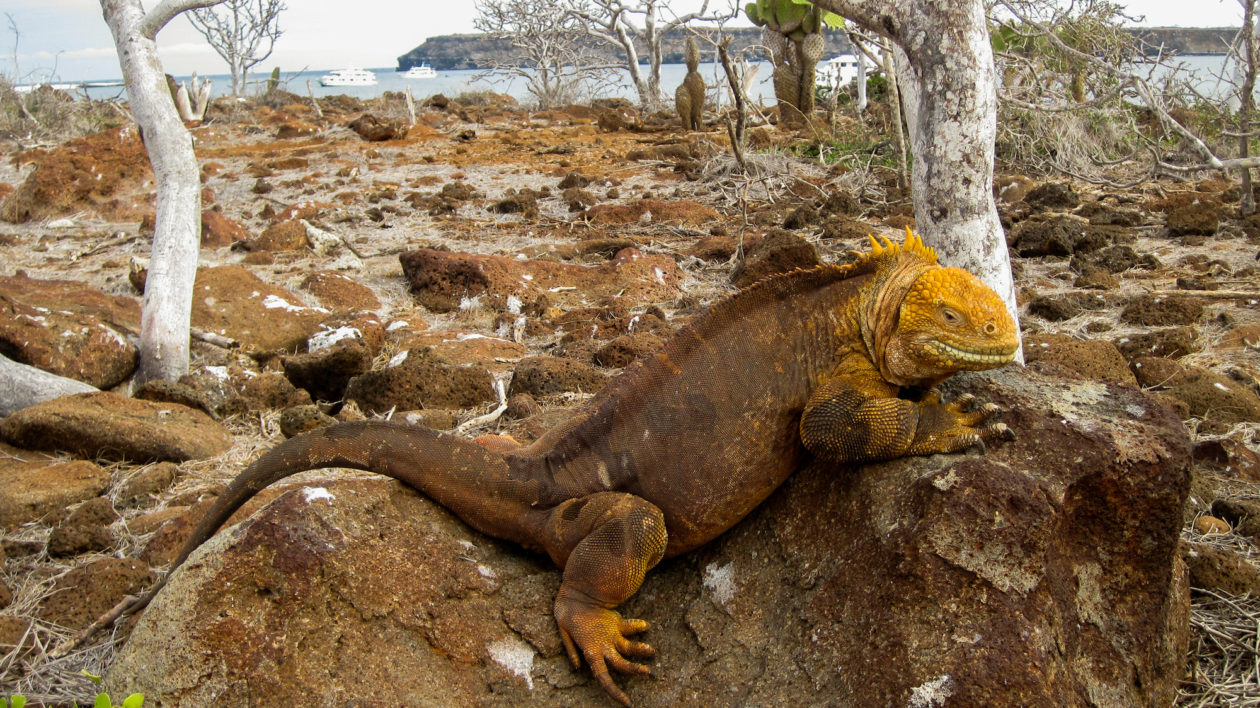
Without the three feral ungulates, Santiago’s iguanas would likely have survived. But the goats and burros consumed the cacti they depended on for food and the other vegetation they depended on for cover. The pigs took out these plants as well but also ate iguana eggs and young.
Pigs were eliminated in 2000 after years of intense trapping, shooting and poisoning by the Galápagos National Park Directorate and the Charles Darwin Research Station. The last burro was killed in 2004, the last goat in 2005.
Removing the final five percent of goats was as difficult as removing the first 95 percent. It required 213 “Judas goats” that, because goats are gregarious, led the eradication team to survivors. Judas goats were captured on Isabela Island and tagged with radio-telemetry collars. Females were aborted, sterilized and, in some cases, injected with hormones that induced perpetual estrus to attract males.
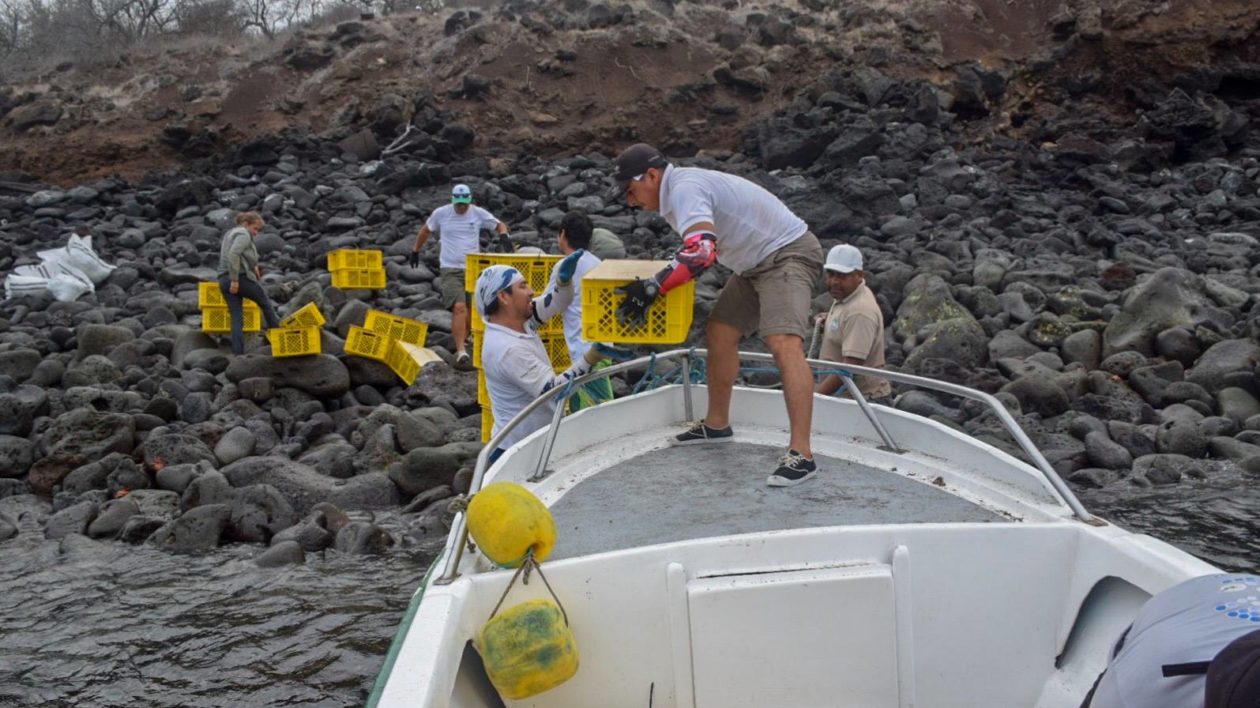
Late in 2018 staff from Island Conservation and Galápagos National Park Directorate hand captured 1,436 iguanas from North Seymour’s population of about 5,000 and, after treating them for parasites and quarantining them for a month on Santa Cruz Island so they could expel any non-native seeds, transported them to the Santiago in January 2019.
For the time being at least, black rats and house mice persist on Santiago. While they’ll doubtless cause some mortality before future eradication, it’s pretty clear that land iguanas will prosper.
On North Seymour, where iguanas were not endemic, they had overpopulated and were stressing vegetation. So the project was a win for that island as well.
This from Island Conservation’s Paula Castano, who led the 2019 iguana translocation: “Watching the first iguanas released on Santiago run into freedom was a unique experience. There are not words to describe that feeling.”
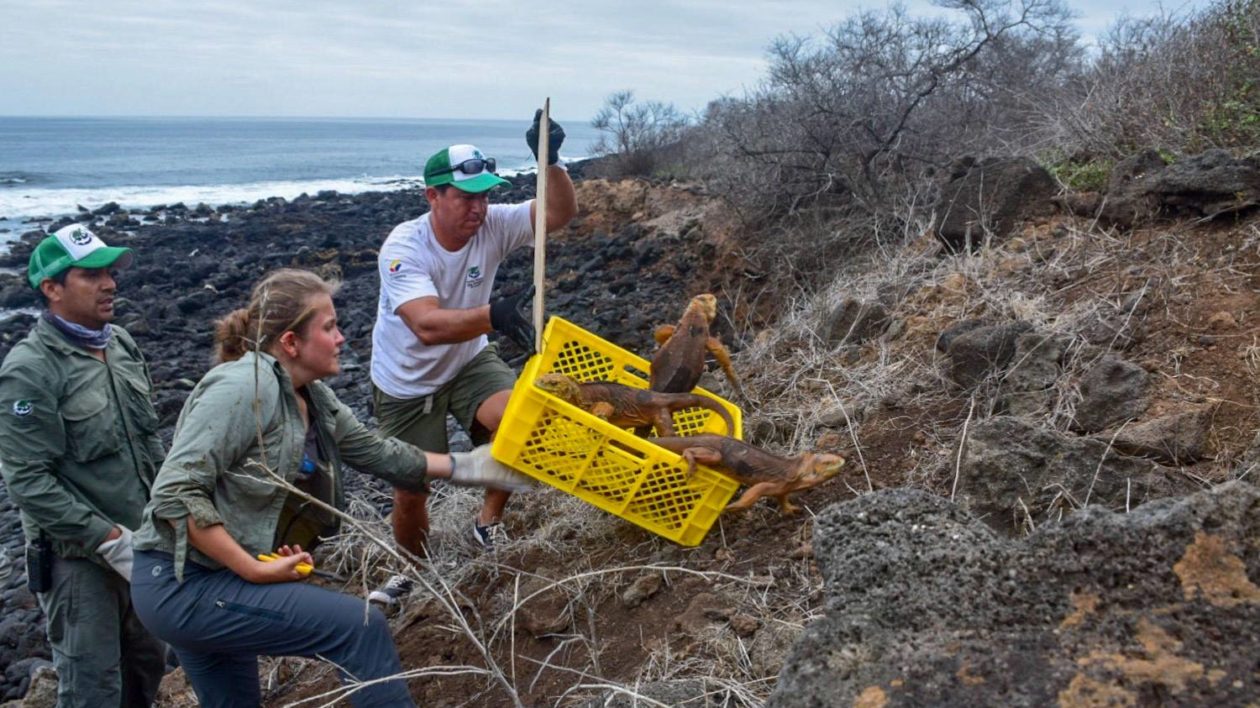
Freeing the Islands of Feral Ungulates
Land iguanas are just one of dozens of native species that now have a future on Santiago Island thanks to eradication of feral ungulates. In addition to all the native birds now repopulating are five reptile species, including the giant Galápagos tortoise that can attain 500 pounds and live for more than 150 years. The islands are named for it, galápago being the Spanish word for tortoise.
Feral ungulate eradication on Santiago, undertaken by the Galápagos National Park Directorate and Charles Darwin Research Station, was part of a larger effort called Project Isabela named for the 1,114,560-acre island comprising half the land mass of the archipelago. The goal, attained in 2006, was to free the main islands—Santiago, northern Isabela and Pinta—of feral ungulates.
Logistics and the extent of the infestations were daunting. Rifles, ammo, and helicopters had to be transported to one of the world’s remotest locations during a time when the U.S. State Department was trying to keep such items as far from Colombia as possible. On Santiago alone, 18,800 pigs and 79,000 goats were killed. The goat infestation of northern Isabela was estimated at 100,000.
What to do with all the carcasses? It would be a terrible waste to let them rot, proclaimed lay commentators; the meat could feed thousands of impoverished people.
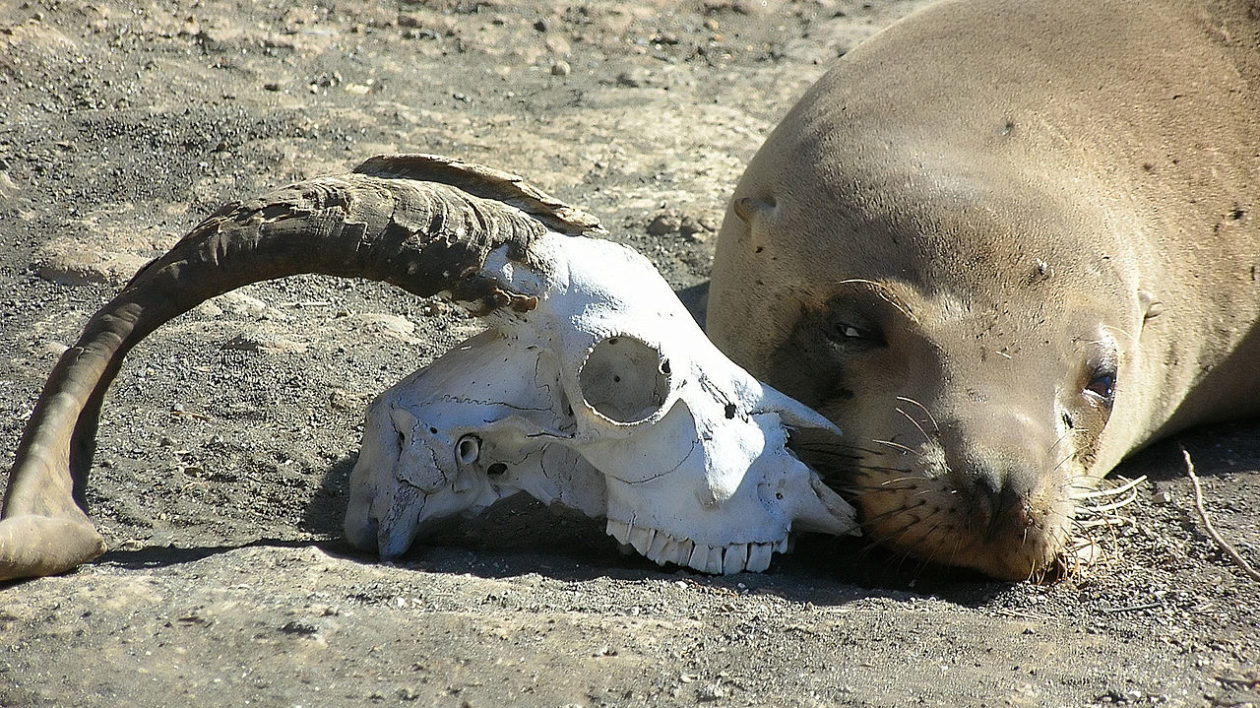
“In our analysis we found major issues with this idea,” says Island Conservation’s Hanson. “Costs for transporting the meat would have been astronomical. And once you start flooding the market with that much food product you offset local markets, putting farmers at risk because the price goes so low they can’t persist. And all the minerals and nutrients the animals had pulled from the soil needed to go back. We found that what had seemed like a great idea would have been a catastrophe. So we left the carcasses and let them decompose.”
Island Conservation’s South American director Dr. Karl Campbell, who led Project Isabela, likened the proposed meat distribution and resultant loss of minerals and nutrients to “removing 10,000 trees from a rainforest.”
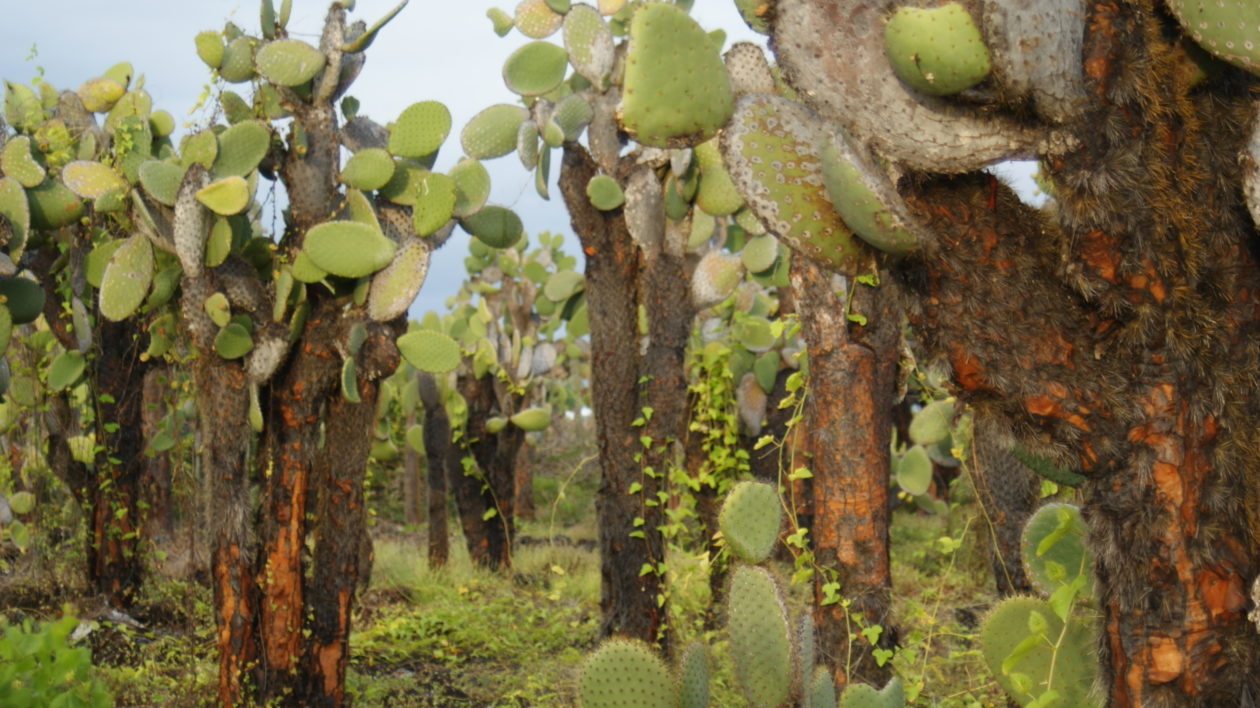
Future Challenges to Invasive Species Management
Remarkably, the largest mammal eradications ever accomplished elicited virtually no opposition from the animal-rights community. The opposition came and comes from a different source.
Among current challenges confronting the partners are intentional goat reintroductions by fishermen, either to re-establish food supplies or express displeasure with all manner of perceived slights and offenses by the government of Ecuador.
Future challenges include the growing school of thought called “Compassionate Conservation” that, as its promoters explain, “considers animals as individuals instead of objects or metrics to be traded off for the good of populations, species or biodiversity.” Basically, leave all killing to the invaders.
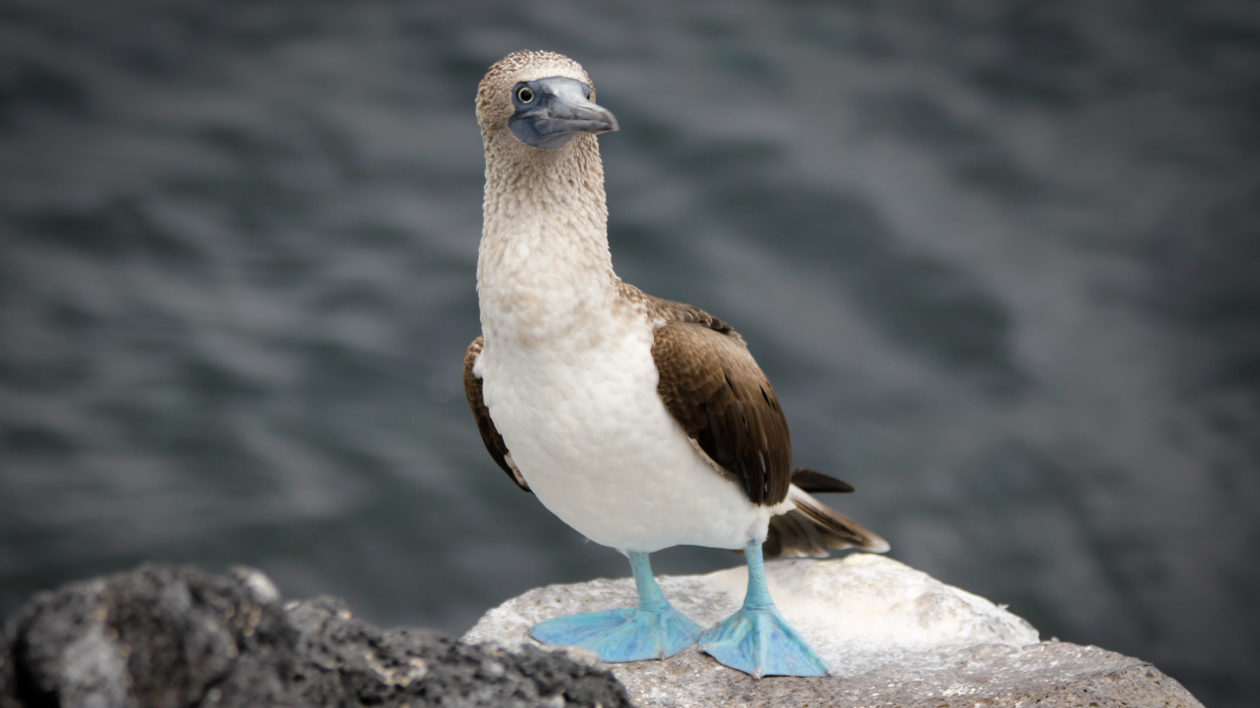
Allied with Compassionate Conservation is this notion, promoted by 19 ecologists in the journal Nature and echoed hither and yon: Invasive species superimposed on a native ecosystem (a precious resource in itself degraded by the mere presence of even harmless non-native species) really aren’t so bad and, in many cases, should be embraced.
A large element of the public subscribes to both these philosophies, as indicated by voluminous commentary on social media in response to eradications of non-native wildlife such as past and ongoing projects in Galápagos National Park.
Examples: “Island Conservation is playing God.” “The non-native species didn’t ask to be put there.” “Killing one species in favor another is wrong.” “Poisoning animals is cruel.” “There has to be a better way.”
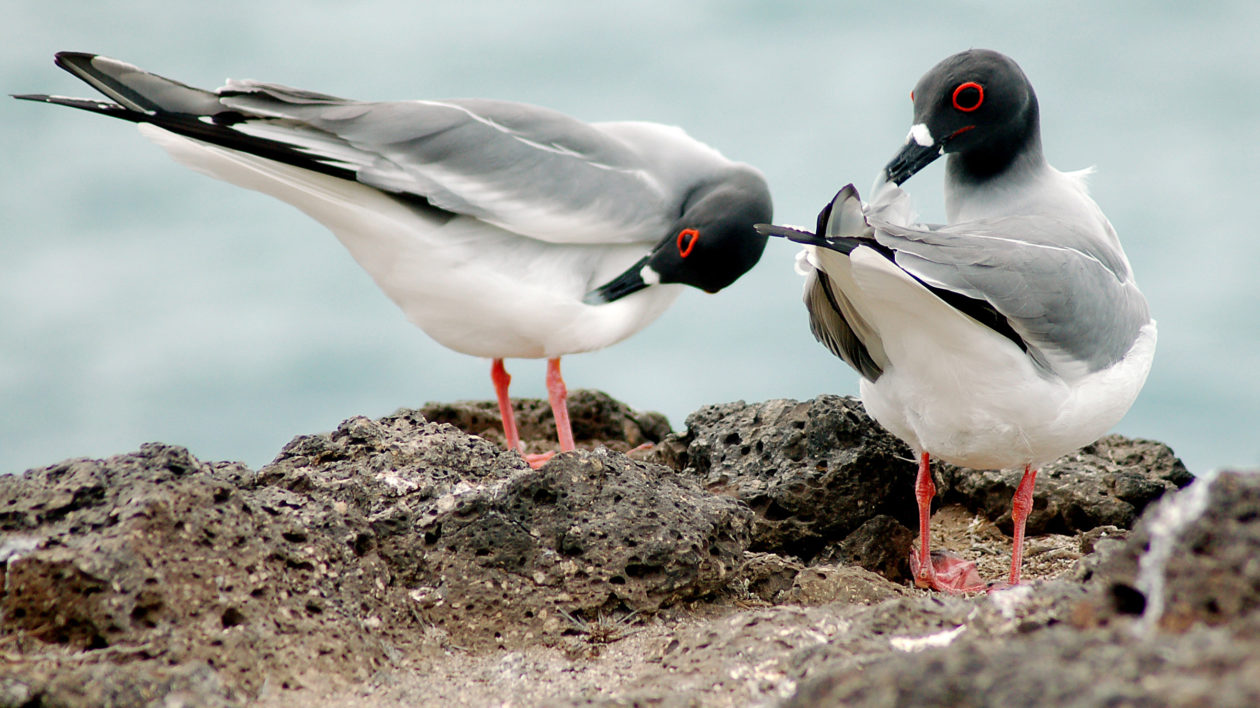
Correcting our past mistakes (instead of sitting on our hands while island wildlife goes extinct as a result of those mistakes) is not “playing God.” The fact that non-natives didn’t ask to be put there is no reason to let them remain. No species has ever been “killed” in island recovery projects; individuals of super-abundant species are killed to prevent extinctions of entire species. “Poisoning animals” is far less cruel than allowing natives to starve or get gnawed to death. Finally, there is no “better way”; in fact, there is no other way.
In response to charges that poisoning and shooting non-native animals is “cruel” Island Conservation’s global affairs director, Gregg Howald, offers this: “Bring us something that will work; we will be the first to adopt it.”
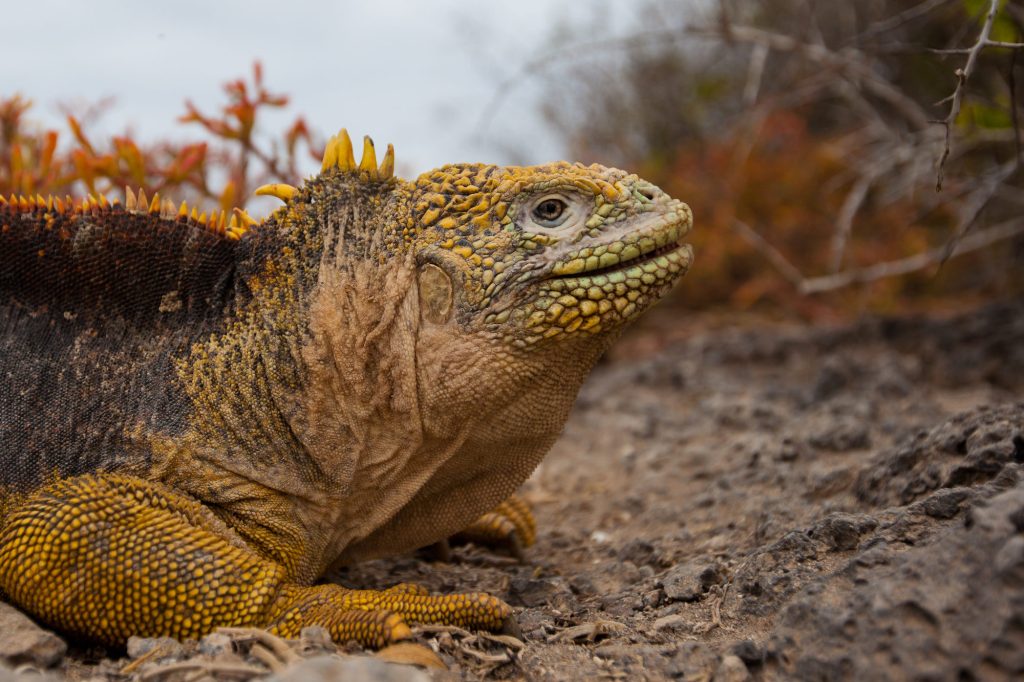



I apologize for the late comment, but I have questions regarding rodent control Santiago Island. Santiago is home to an endemic rodents, the Santiago Galapagos Mouse (Nesoryzomys swarthy), and is possibly home to another, the Galapagos Rice Rat (Aegialomys galapagoensis). Both are threatened species. Eradication of non-native rodents is also important for their survival, but how would it even be possible to selectively eradicate non-native rodents without impacting the native rodents? Rodent eradication often relies on poisoning and it’s not hard to see how such a strategy could have severe negative impacts on the remaining native rodents of Santiago.
Fantastic news all round!
Not to be picky but Galapagos surely is in Ecuador not Colombia, much less “Columbia” ! But thanks for the great news.
Hi Tony:
We didn’t report that Galapagos was in Colombia. In fact, we reported that it was in Ecuador. The point was that in 2006 there was all kinds of trouble in Colombia, and the U.S. State Department was trying to keep rifles and ammo as far from that nation as possible. Colombia is adjacent to Ecuador. This made it extremely difficult for the recovery team to bring in the tools to eliminate ungulates from the main islands.
PS. But thanks for the spell check. We’ll correct.
Wondering what the results are of native predators eating dead poisoned rats? Any studies, any dead raptors etc? This is a big problem here in California, and one of the reasons a ban on anticoagulant rodenticides is moving through our state legislature.
Hello Freda:
Thanks for raising this point. There is often some unavoidable by-kill of non-target wildlife with island rodent eradications. But it is very minor and always ecologically irrelevant. There are two reasons for this happy outcome: 1. the bait is deployed by wildlife professionals; and 2. Bell Labs designs bait that is unpalatable to native wildlife. While secondary poisoning is sometimes possible, there are not many predators on islands that would eat dying rodents. On the mainland the situation is the exact opposite. The public abuses anticoagulant rodenticide and winds up killing everything from raptors to pets to bobcats to cougars. Wisely, California has banned public use of these poisons. The ban does not affect deployment by wildlife professionals. It is unfortunate that wildlife advocates like Wildcare and Island Watch oppose all use of rodenticide including by wildlife professionals of Island Conservation, the US Fish and Wildlife Service and such partners as The Nature Conservancy. You might be interested in my pieces linked here:
https://www.hatchmag.com/articles/chemophobia-america-part-ii-brodifacoum/7714790
and:
https://e360.yale.edu/features/alien_islands_why_killing_rats_is_essential_to_save_key_wildlife
and:
https://blog.nature.org/2015/12/15/miracle-palmyra-rats-birds-recovery-restoration-invasive-species-hawaii-nature-wildlife/
More good news from the Galapagos:
https://www.islandconservation.org/protecting-livelihoods-biodiversity-invasive-species-floreana-island/?fbclid=IwAR18MZ47Gwz3THxlz3TnPTj0swiXwiaBMBBKJIQ3RwlXCn8w-mtqxPE1h_k